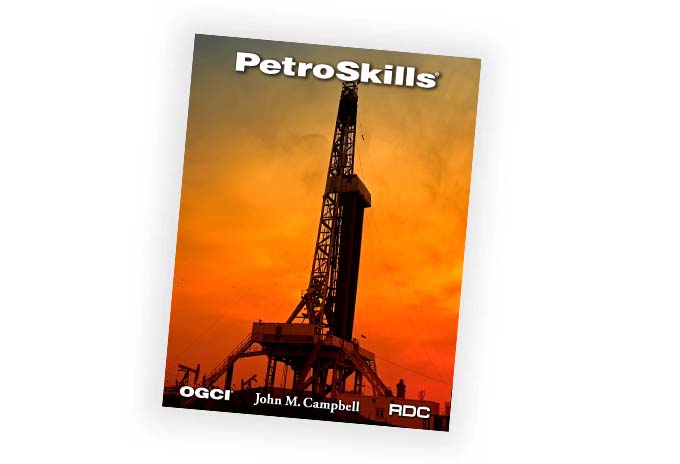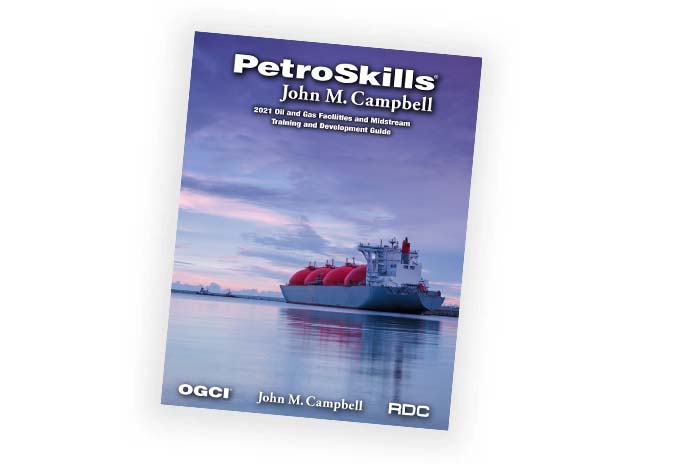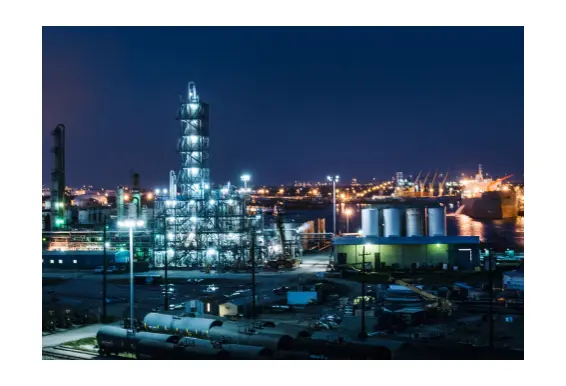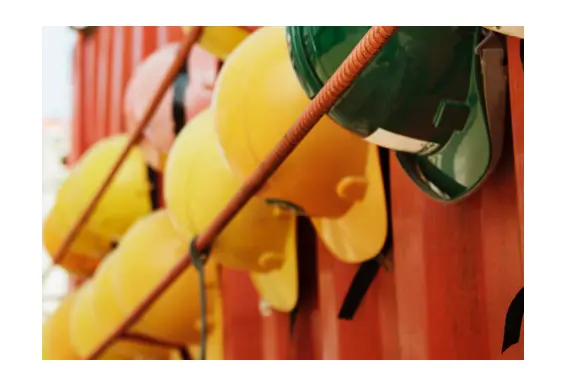Production Technology for Other Disciplines - PTO - eLearning course
About the Course
This workshop will be delivered virtually through PetroAcademy. Each PetroAcademy offering integrates multiple learning activities, such as reading assignments, self-paced e-Learning, virtual instructor-led sessions, discussion forums, group exercises, case studies, quizzes, field trips, and experiential activities.
See detailed schedule and PetroAcademy details.
This course is available on demand, wherein the course work is self-paced and instructor-led sessions are available any time as videos.
See demo of online learning and instructor-led modules.
This is an asset team blended course that introduces a broad array of important daily production technology practices. Terminologies, expressions, axioms, and basic calculations regularly utilized by Production Techs are covered throughout the course. Emphasis is upon proven technology required to effectively develop and operate an asset in a multi-discipline development environment. Practical application of technology is emphasized. Both theory and actual field examples and well completion programs are studied along with class problems, exercises, and videos. Nodal analysis examples to assess well performance are set up. Well completions equipment and tools are viewed and discussed. Participants work several exercises including basic artificial lift designs, acidizing programs, gravel pack designs, and fracturing programs. Shale gas and oil development challenges are thoroughly explained. Horizontal and multilateral technology is presented. Case studies illustrate the multi-discipline interaction required in applying various production technologies to optimize project development and operations.
Target Audience
Exploration and production technical professionals, asset team members, team leaders, line managers, IT department staff who work with data and support production applications, data technicians, executive management, and all support staff who require a more extensive knowledge of production tehnology and engineering.You Will Learn
-
This PetroSkills PetroAcademy blended skills module addresses the concept of Production Technology and the production technologists who define and implement the details of managing a hydrocarbon asset.
-
Production technologists, or a company's PTs as they are often described or labeled, are subject matter experts (SMEs) across all oilfield disciplines who contribute both formally and semi-formally throughout an asset's life. Their team work and focus continually brings both proven oilfield practices as well as prototype emerging and new technology to fruition in a hydrocarbon exploitation development.
-
This module develops the context of what PTs do, how they interact, how they function in leadership roles, and presents many types of production technology applications that are envisioned, initiated, developed in detail, implemented, and managed.
DRILLING OPERATIONS and WELL COMPLETIONS
-
In this module you will learn about well function, onshore and offshore drilling, drilling programs, drilling rig components, and drilling systems; including drilling, rotating, fluid, and blowout prevention systems.
-
You will also learn about casing and cementing, wellhead installation, types of well completions, formation damage, well perforation, sand control strategies, and well stimulation.
PRODUCTION PRINCIPLES
-
This module introduces four characteristics of optimum oil and gas depletion production principles, namely: Effects of Geological and Reservoir Properties - Inflow and Outflow Performance; Tubing Strings, Outflow, and Lift Mechanics; and Field Development Planning. Each is examined to illustrate the importance of up front data acquisition to perform studies to understand target design objectives for conventional oil and gas reservoirs and unconventional shale oil and shale gas reservoirs and unconventional coal bed methane reservoirs.
WELL PERFORMANCE and NODAL ANALYSIS FUNDAMENTALS
-
This module explains the key principles in analyzing well performance parameters of any production (or injection) well using the principles and practices of NodalTM analysis, also referenced as system analysis.
-
Inflow and outflow equations are developed, multiphase hydraulics are reviewed, the building blocks of Nodal analysis are expanded, and several exercises are worked.
ROD, PCP, JET PUMP and PLUNGER LIFT
-
This module will specifically describe the engineering design and operational requirements of Rod Pump, Progressing Cavity Pump (PCP), Jet Pump, and Plunger Lift well completions types.
-
How to evaluate reservoir and well conditions to choose the appropriate artificial lift system for each set of conditions is also covered.
RECIPROCATING ROD PUMP FUNDAMENTALS
-
This module focuses upon the three main components of a rod pump well completion, namely, the surface unit, the rod string, and the downhole pump.
-
Each component is examined and investigated to define the rod pump completion loading parameters.
-
Related rod pump design considerations necessary for optimizing rod pump design and operation are presented.
GAS LIFT and ESP PUMP
-
This module describes when best to use gas lift, run inflow performance analysis sensitivity cases, and select optimum tubing size to achieve production rate targets in wells in conventional and unconventional resources plays.
-
It describes the gas lift theory, equipment and covers the best practices of gas lift design, surveillance and optimization.
GAS LIFT FUNDAMENTALS
-
This module describes when best to use gas lift, run inflow performance analysis sensitivity cases, and select optimum tubing size to achieve production rate targets in wells in conventional and unconventional resources plays.
-
It describes the gas lift theory, equipment and covers the best practices of gas lift design, surveillance and optimization.
ELECTRICAL SUBMERSIBLE PUMPS FUNDAMENTALS
-
This module explains how to conduct inflow performance analysis, and select the appropriate electrical submersible pump (ESP) configuration to achieve production rate targets in wells in conventional and unconventional resources plays, and document equipment failure data when required.
FORMATION DAMAGE and MATRIX STIMULATION
-
Unexpected loss of production following initial completion or a well intervention job is not always due to the same set of circumstances.
-
Topics covered include: the basic causes of oilfield formation damage and how they are recognized; the concept of “True Formation Damage” and the principles of formation remediation; how “pseudo” damage and differs from True Formation Damage; limestone matrix acidizing; and sandstone matrix acidizing.
PERFORATING
-
This module illustrates the tools and processes for establishing communication between a well and the productive formation(s) accessed by the well.
-
The evolution of shaped charges is presented and the means for delivering perforating charges into a well using various gun configurations is illustrated.
-
The importance of understanding charge performance to select the appropriate charge for a particular set of well conditions is discussed.
SAND CONTROL
-
This module illustrates various causes of sand production and its related effect upon producing systems.
-
Alternatives that range from simply tolerating minimal sand production volumes to complex downhole and surface equipment and practices to mitigate the negative effects of sand production are presented.
-
Basic gravel pack design is discussed and a design problem is presented. Expandable sand screens are illustrated.
HYDRAULIC FRACTURING
-
The hydraulic fracturing module covers basic rock mechanics, stimulation design considerations, and optimum fracture length at the core level.
-
Both fracture acidizing and propped hydraulic stimulations are covered.
-
The class reviews propped hydraulic fracturing for both the conventional sandstone reservoirs and unconventional shale reservoirs and explains why the techniques are different.
PRODUCTION PROBLEMS DIAGNOSIS
-
This module describes the causes and effects of most common well problems and remediation approaches.
-
Topics include: field collected data; conventional and unconventional resources plays; drill stem and production tests; validating collected data; pressure buildup analysis; the effect of pressure on fluid flow, Inflow Performance Relationship analysis principles, and the best tubing correlations when modeling vertical and horizontal wells; and the importance of applying and complying with all requirements to ensure integrity throughout life cycle of a well.
PRODUCTION TECHNOLOGY APPLICATIONS
-
This module addresses selected applications which may be put into practice in designing and operating a hydrocarbon asset.
-
Both conventional limestone and sandstone reservoir examples and situations as well as unconventional shale oil and gas reservoirs and various real world applications are presented for discussion.
-
Among various technologies presented are an overview of subsea development, well completion equipment, smart wells and smart field know-how and hardware and software, expandable tubulars, swellable elastomers, produced water shut off chemistry, surveillance practices, and other contemporary production technology advancements regularly utilized in contemporary developments throughout the oilfield.
Course Content
BLENDED LEARNING WORKSHOP STRUCTURE
This program is comprised of the following activities:
ILT = Virtual Instructor-led Training
OL = Online Learning Activity/Reading
| Unit | Activity | Hours (Est.) | Subject |
| Unit 1 |
ILT |
1.0 | Orientation Webcast (pre-recorded) |
| OL | 2.0 | The Role of Production Technology | |
| Unit 2 | OL | 3.0 | Drilling Operations and Well Completions |
| OL | 5.0 | Production Principles | |
| Unit 3 | ILT | 1.5 | Well Performance and Nodal Analysis Fundamentals - Session 1 |
| OL | 7.0 | Well Performance and Nodal Analysis Fundamentals | |
| ILT | 1.5 | Well Performance and Nodal Analysis Fundamentals - Session 2 | |
| Unit 4 | ILT | 5.0 | Rod, PCP, Plunger Lift, and Jet Pump |
| Unit 5 | ILT | 1.5 | Reciprocating Rod Pump Fundamentals - Session 1 |
| OL | 5.0 | Reciprocating Rod Pump Fundamentals | |
| ILT | 1.5 | Reciprocating Rod Pump Fundamentals - Session 2 | |
| Unit 6 | OL | 4.0 | Gas Lift and Electrical Submersible Pumps |
| Unit 7 | ILT | 1.5 | Gas Lift Fundamentals - Session 1 |
| OL | 5.0 | Gas Lift Fundamentals | |
| ILT | 1.5 | Gas Lift Fundamentals - Session 2 | |
| Unit 8 | ILT | 1.5 | ESP Fundamentals - Session 1 |
| OL | 5.0 | ESP Fundamentals | |
| ILT | 1.5 | ESP Fundamentals - Session 2 | |
| Unit 9 | OL | 3.0 | Formation Damage and Matrix Acidizing |
| OL | 3.0 | Perforating | |
| Unit 10 | OL | 3.0 | Sand Control |
| OL | 4.0 | Hydraulic Fracturing (Conventional and Unconventional) | |
| Unit 11 | OL | 3.0 | Production Problem Diagnosis and Intervention Planning |
| OL | 5.0 | Production Technology Applications |
Product Details
Categories:
UpstreamDisciplines:
Production and Completions EngineeringLevels:
FoundationProduct Type:
CourseAdditional
Request a Public Session
If you are interested in a public session of this course, please click the button below to request it.
Request Public SessionIn-House Training
This course is also available upon request as a private, on-site seminar. Contact us for details and pricing.
Request In-House TrainingNeed Help
Contact us if you have additional questions about how to register for or attend this course.
Contact Us



